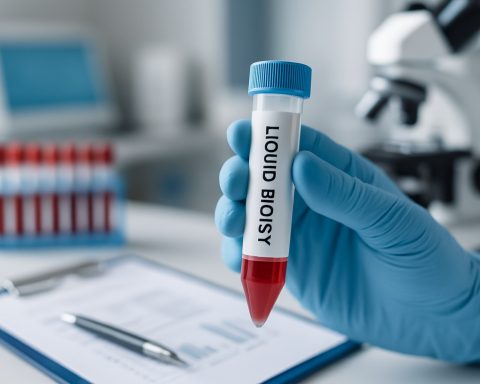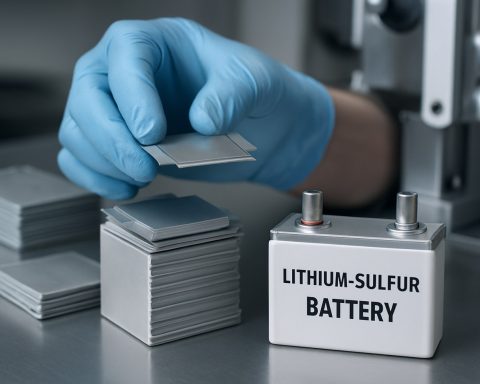- Inlyte, a US startup, introduces a revolutionary iron-sodium battery technology, poised to challenge Tesla’s Megapack with enhanced cost-efficiency and longevity.
- The partnership between Inlyte and Swiss-based HORIEN Salt Battery Solutions facilitates the rollout of innovative battery systems, boasting a 90% roundtrip efficiency and a lifespan of over 7,000 cycles or 20 years.
- Inlyte’s strategic acquisition of UK’s Beta Research accelerates its transition from concept to production, supported by a 30,000-square-foot production facility.
- Plans are underway to open “Inlyte Factory 1” by 2027 in the US, leveraging favorable energy policies and marking a significant step in sustainable manufacturing.
- Tesla’s Megafactory in Shanghai has launched its first Megapacks, with a mission to intertwine automotive innovation and global energy storage solutions.
- The evolving landscape presents a dynamic competition between traditional energy solutions and new technologies, promising enhanced sustainability outcomes for consumers.
Amidst the constant whir of innovation in energy storage, a beacon of brilliance has emerged—one that threatens to shake the foundation currently held by Tesla’s Megapack. This audacious contender? A revolutionary iron-sodium battery, a potential game-changer that promises not only extended durations but also tantalizing cost-efficiency and longevity.
Venture into the world of Inlyte, a US startup that has carved its niche by unveiling a battery technology poised to transform how we store energy. With aspirations that stretch from mid-range to marathon-like storage capacities (up to 24 hours or more), these batteries aren’t just a flash in the pan. They symbolize the next leap in renewable energy.
In collaboration with HORIEN Salt Battery Solutions, a Swiss powerhouse in battery manufacturing, Inlyte accelerates its journey from blueprint to assembly line. Their synergy enables the replication of proven systems, now with a twist—embedding iron-sodium technology. This step doesn’t merely promise batteries; it promises transformative endurance. Testing has revealed a stellar 90% roundtrip efficiency alongside an unparalleled lifespan of at least 7,000 cycles or 20 years, matching the environmental stewardship expectations of today’s market at a significantly reduced cost.
Inlyte’s journey took a bold leap in 2022 with the strategic acquisition of Beta Research, a UK-based entity credited with pioneering the original sodium metal halide battery. This acquisition enriches Inlyte’s potential to swiftly transition from concept to pilot production—an agile adaptability—and is buoyed by a sprawling 30,000-square-foot production line ready for deployment.
Plans are firmly rooted to unveil a manufacturing marvel, “Inlyte Factory 1,” by 2027 in the United States, reflecting a deliberate strategy that aligns with favorable federal energy policies. Although the curtain is yet to rise on the factory’s exact locale, enthusiasm brims for the future it proposes—a future aligned with sustainable ambitions.
While Inlyte crafts its tale of innovation, on the opposite shore, Tesla’s Megafactory in Shanghai churned out its first batch of Megapacks. These monolithic energy reservoirs, comparable to the battery strength of over 60 Tesla Model 3s, are destined for the grids of the globe, starting with China. Tesla’s statement underscores the duality of its mission—the intertwining of automotive innovation with unparalleled energy storage solutions.
As these stories unfold, there exists a palpable tension in the air—a quasi-battle of signatures, capacity against longevity, cost against efficiency. In this arena, the iron-sodium candidate dares to persist, offering a narrative not just of endurance but revolution.
The burgeoning development poses a question to us all: Within this juxtaposition of tradition against novelty, which technology will ultimately power the day? As more challenges to the status quo arise, consumers stand to benefit as they witness a renaissance in energy solutions—an undeniable testament to humanity’s quest for a sustainable future.
The Revolutionary Rise of Iron-Sodium Batteries: Could They Dethrone Tesla’s Megapack?
The energy storage sector is on the cusp of a paradigm shift with the emergence of iron-sodium battery technology. Spearheaded by the ambitious US startup Inlyte, this innovative solution presents a significant challenge to established giants like Tesla, particularly its Megapack. The unique properties of iron-sodium batteries promise to redefine energy storage with potential implications spanning cost-efficiency, longevity, and sustainability.
Key Insights into Iron-Sodium Batteries
1. Enhanced Longevity:
Iron-sodium batteries boast an impressive lifespan, with early tests showing they can achieve at least 7,000 cycles or 20 years of use. This durability matches that of existing technologies while potentially surpassing current expectations for renewable energy storage solutions.
2. Cost Efficiency and Sustainability:
Iron and sodium are abundant and relatively inexpensive compared to lithium and cobalt, which are critical components in lithium-ion batteries. The use of these materials could lead to reduced production costs and provide a greener alternative to traditional energy storage methods.
3. High Roundtrip Efficiency:
With a roundtrip efficiency of 90%, these batteries maximize the energy stored and retrieved, which is crucial for large-scale energy applications and enhances overall system performance.
How Inlyte is Leading the Charge
Production Expansion and Strategic Partnerships:
Inlyte has strategically partnered with Swiss company HORIEN Salt Battery Solutions, leveraging its expertise in manufacturing to integrate and scale iron-sodium battery production. This collaboration facilitates an effective transition from testing stages to widespread deployment.
Acquisition of Beta Research:
The acquisition of Beta Research has given Inlyte a strong foothold in the sodium metal halide tech landscape, enabling accelerated development and innovation within its pipeline.
Manufacturing and Federal Policies:
By 2027, Inlyte plans to open “Inlyte Factory 1” in the United States, capitalizing on supportive federal energy policies. This move signals a long-term commitment to bolstering domestic production and fueling local economic growth.
Pressing Questions Answered
How do iron-sodium batteries compare to Tesla’s Megapack?
While Tesla’s Megapacks are renowned for their integration into energy grids worldwide, notably in China, iron-sodium batteries provide competitive advantages in cost, material availability, and environmental impact. The choice between these technologies could depend on specific project needs related to longevity, cost objectives, and sustainability goals.
What challenges remain for iron-sodium technology?
Adoption constraints might include scaling up production capacities to meet global demands and overcoming hurdles associated with the new tech’s integration into existing infrastructures dominated by lithium-ion solutions.
The Future of Energy Storage
Market trends suggest a growing preference for sustainable, cost-effective solutions. As global demand for renewable energy storage heightens, iron-sodium batteries could play a pivotal role, potentially finding application in grid storage, transportation, and emergency power solutions.
Actionable Recommendations
– For Energy Developers: Consider exploring partnerships with emerging tech companies like Inlyte for pilot projects and technology demonstrations to diversify your energy storage portfolio.
– For Policy Makers: Support policies that encourage the use of environmentally friendly resources and offer incentives for researching and adopting alternative energy storage solutions.
– For Consumers: Stay informed about new technology developments. If involved in home solar or EV setups, investigate opportunities to integrate alternative battery technologies for personal or community energy solutions.
Visit Inlyte to stay updated on their progress and tap into the pioneering wave of energy storage technology. Can iron-sodium batteries truly replace the incumbents? Only time will tell, but the battle for supremacy has certainly begun.









